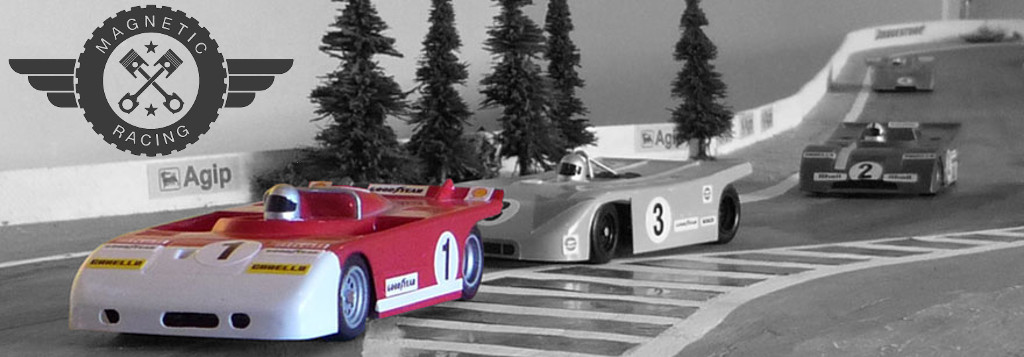Track building often seems intimidating, but is actually very straightforward. It is very easy to produce a working track in a few hours and is also quite easy to modify if you make a mistake. The key to a good track is a smooth surface and a consistent wire height.
There are two recognized ways of building a track and the choice is yours. Check out both methods before you decide as there is useful information across both web pages that may be relevant whichever method you choose.
The first traditional way is to glue wire directly to a base board and then build the road surface up level with card and plaster. You can produce extremely flat smooth running tracks with this method with little equipment.
Advantages:-
1) You do not need a router or any special equipment to build a track.
2) Lane change plates are easy to use and prevent novice drivers from coming off the track when they turn the wrong way.
3) The card surface makes the track quieter when the cars are in operation
Disadvantages:-
1) Track building is more messy as you use card and plaster
2) It takes a longer to build a track.
3) Modification of the track is a little harder as removing and cutting card can be difficult.
4) The wire has to be pinned in place whilst it dries. Wire joints are a little more tricky to do.
Check out more details of this method on the link here.
The second way to build a track often referred to as the “Keld” method (After its inventor) uses a cutting wheel mounted to a Dremel to cut a groove in the base board. A small amount of filler is used to smooth the track over before it is painted.
Advantages:-
1) Track building is very quick
2) Tracks can be modified easily
3) The wire is held more firmly in a groove when the track is under construction.
Disadvantages
1) The tools such as a Dremel and cutting disc need to be purchased.
2) Only smooth base boards can be used such as plywood.
3) The track is slightly more noisy as there is no card surface to dampen any sound
4) Lane change plates are more difficult to implement. Many routed tracks do not use them for this reason. This means novice drivers may leave the track if they turn the wrong way at a lane change. This is not normally a problem after 15 – 20 minutes of driving.
Check out more details of this method on the link here.
Finishing Details
Please check out our guide on how we completed a basic track with scenery here.

